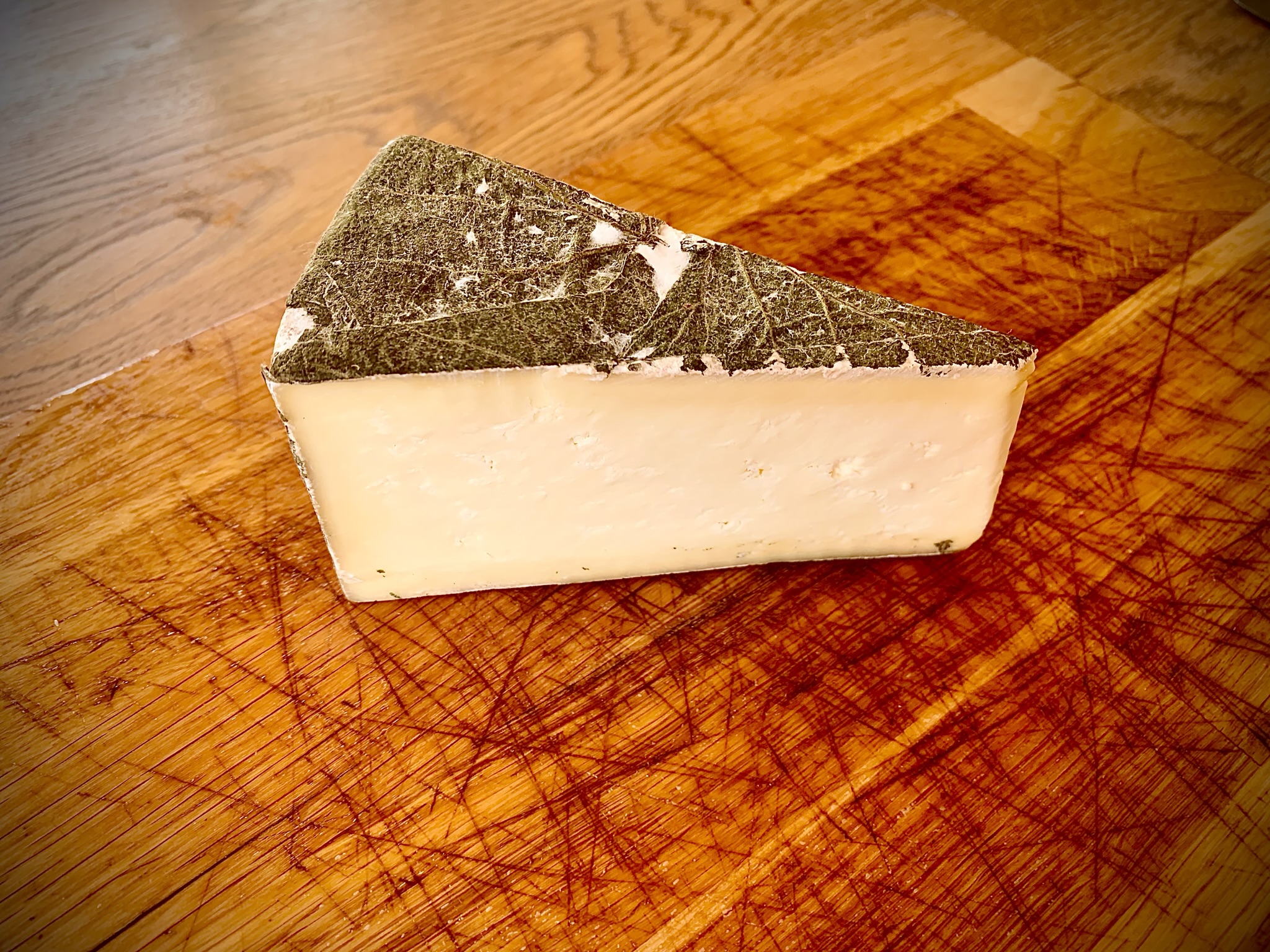Cheese of the month: Cornish Yarg

Creamy, lemony and wrapped with nettle leaves, Cornish Yarg is one of the most distinctive cheeses produced in the UK.
History of Cornish Yarg
Although it sounds like a traditional Cornish word, Yarg actually takes its name from farmer Alan Gray (Yarg spelt backwards) who first produced the cheese back in the 1980s. It is reported that Alan and his wife found an original recipe for a nettle-wrapped cheese in their attic which dated back to the 17th century.
The cheese is now produced by Catherine Mead at Lynher Dairies in the small Cornish village of Ponsanooth and uses traditional methods.
The cheese is made using milk from the dairy’s herd of pedigree Ayrshire cows, as well as carefully selected milk from other local farms. It is pasteurised and then rennet and a culture is added to the milk by hand. The rennet helps the milk to form into curds and the culture allows the cheese to ripen as it ages.
The liquid whey is drained from the curd which is then salted and cut into tiny pieces. The curd is then added to moulds and pressed for 24 hours to remove even more liquid. It is then ready to be wrapped in the nettle leaves.
The nettle leaves are foraged for locally, each one is hand-picked between May and July and they are then frozen until needed. The leaves are dipped in a brine solution and then painted onto the cheese in a pattern know as dragon’s teeth. The nettles give flavour and provide a protective layer as the cheese matures.
The cheese is then aged for about four to five weeks in a cold storage room with high humidity. During this time a naturally occurring white mould starts to cover the the cheese. Once the cheese has matured, the nettles will have imparted a mushroomy, herbal and woody taste to the cheese, but no longer have their sting.
This award-winning cheese picked up Gold at last year’s Great Taste Awards and a Bronze at the World Cheese Awards 2021. The dairy also produces a Garlic Yarg, which uses wild garlic leaves instead of nettles. Their Cornish Kern, originally derived from a Gouda-style cheese, won Supreme Champion at the World Cheese Awards in 2017.
Key facts
| From | Cornwall, England |
| Milk | Cow’s milk |
| Age | 8 weeks + |
| Strength and style of cheese | Mild, semi-hard, nettle-wrapped, crumbly |
| Vegetarian | Yes |
| Pasteurised | Yes |
| Tasting notes | Citrus, lemon, mushroom, milky, lactic, herby, tangy, yoghurt, woody |
Drinks pairing
This is a fine cheese. It has a creamy, milky taste, good texture and the delicate rind helps to impart flavour. In fact it is so good it would be very nice to enjoy just on its own. However, if you’re looking for a drinks pairing, the citrus notes in the cheese would work well with a nice cider or a fruity and zesty white wine like a riesling, chardonnay or sauvignon. If you’re looking to pair with red wine, opt for something on the lighter side, like a pinot noir.
I matched this with not one, but two great beers. The first is the Nico Köln Lager from Orbit Beers in London.
This lager is light enough that it doesn’t mask the taste of the cheese, both flavours are distinctive and compliment each other perfectly. The lager brings out the creaminess of the cheese and the Yarg amplifies the the hops in the beer.
The lager’s apple, citrus and herbal notes marry well with the lemony, creamy and mushroomy taste of the cheese. There was a slight liquorice aftertaste as well which was very pleasant.
The second pairing was Green Mountain Session IPA from Thornbridge Brewery in Derbyshire. This hazy IPA uses Australian and American hops (Citra, Galaxy, Mosaic and Amarillo). It’s lemony and smooth on the palate with a pleasing bitter finish.
This was another super pairing – you could still get the creamy notes of the cheese and it brought out the saltiness at the end. The beer also didn’t destroy the texture of the cheese, as some beer pairings made the Yarg taste a little rubbery.
Whatever you pair this wonderful British cheese with, I hope you agree that it is a delicious addition to any cheeseboard.

Green Mountain Session IPA 
Cornish Yarg 
Nico Köln Lager